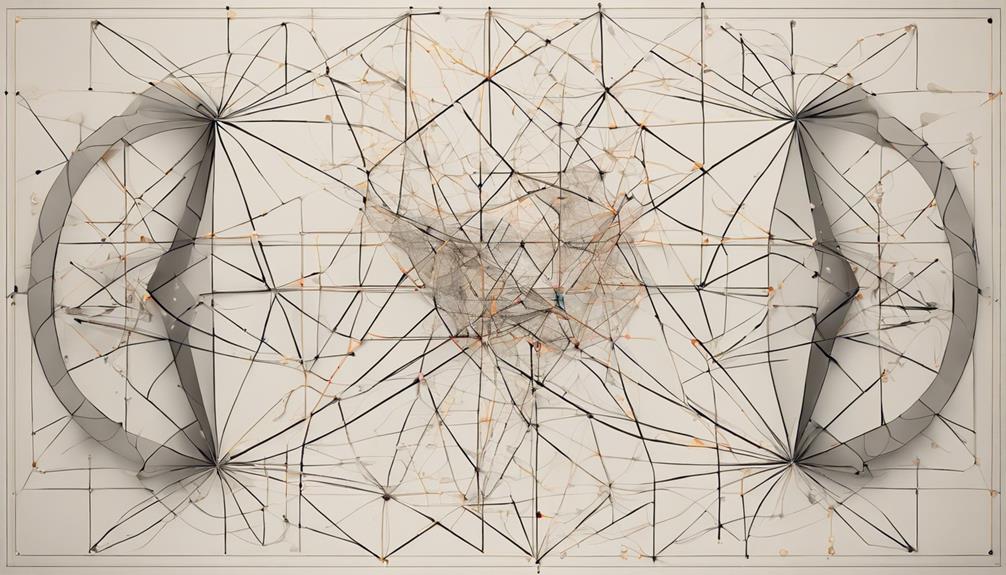Triangular Mergers Vs. Forward and Reverse Mergers

Triangular mergers and forward/reverse mergers represent two distinctive strategies in the realm of mergers and acquisitions. In a triangular merger, the acquiring company establishes a subsidiary to facilitate the merger with the target company. A forward triangular merger involves merging the target company into the buyer's subsidiary, while a reverse triangular merger entails integrating the buyer's subsidiary into the target company. These variations offer strategic advantages and legal safeguards based on the specific objectives of the acquiring entity. Understanding the nuances of each merger type is crucial for mitigating risks and legal liabilities in M&A transactions.
Mastering the intricacies of these different merger structures can provide significant benefits in your M&A pursuits. By delving into the specific legal and tax implications of triangular mergers versus forward and reverse mergers, companies can make informed decisions that align with their strategic goals. This knowledge empowers organizations to navigate the complexities of M&A transactions more effectively and optimize their outcomes.
Key Takeaways
- Triangular mergers involve an acquiring company, a subsidiary, and a target company, creating a unique legal structure that offers various strategic benefits and protections. The acquiring company sets up a subsidiary to facilitate the acquisition of the target company, allowing for a more seamless integration of operations and assets.
- Unlike forward and reverse mergers, triangular mergers provide a level of legal protection for the acquiring company. By using a subsidiary as the acquiring entity, the parent company can shield itself from certain liabilities of the target company, reducing potential risks and exposures in the transaction.
- Forward triangular mergers, a subtype of triangular mergers, involve the subsidiary of the acquiring company directly acquiring the target. This structure helps to isolate the target company's liabilities within the subsidiary, ensuring that they do not directly affect the parent company's operations or financial standing.
- Compliance requirements for triangular mergers, including both forward and reverse variations, can vary based on the specific circumstances of the deal. Companies need to carefully consider their goals and objectives to determine the most suitable merger structure that aligns with their strategic vision and regulatory obligations.
- In the context of a forward triangular merger, the subsidiary plays a crucial role in facilitating the integration process post-acquisition. It acts as a bridge between the acquiring company and the target, helping to streamline the transition of operations and resources to maximize the benefits of the merger.
Overall, triangular mergers offer a distinctive approach to mergers and acquisitions, providing companies with a flexible and strategic framework to navigate complex transactions while managing potential risks and liabilities effectively.
Understanding Triangular Mergers
Triangular mergers involve three key entities: the acquiring company, a wholly-owned subsidiary, and the target company. These mergers provide robust legal protections and tax benefits that can help streamline the acquisition process for savvy business leaders.
In a forward triangular merger, the target company is merged directly into the buyer's subsidiary. This setup shields the parent company from any liabilities linked to the target, thus safeguarding the acquiring firm.
On the other hand, a reverse triangular merger involves merging the buyer's subsidiary into the target company. This approach can be beneficial when the acquirer intends to preserve the target's brand identity and legal status.
Understanding the intricacies of triangular merger structures is crucial for successfully navigating acquisitions. By adeptly managing both forward and reverse mergers, acquiring companies can enhance their tax treatment, reduce risks, and facilitate the integration process.
Mastering these strategies equips business leaders with a valuable toolkit for driving strategic growth through mergers and acquisitions.
Forward Triangular Merger Overview
In a forward triangular merger, the acquiring corporation creates a new subsidiary to acquire the target company. This subsidiary then merges with the target, taking on all of its assets and liabilities. This structure provides additional protection for the acquiring corporation against any potential liabilities of the target company.
Forward triangular mergers are commonly used in situations where the acquiring company wants to isolate the target company's liabilities from its own operations. By creating a separate subsidiary to handle the acquisition, the acquiring company can limit its exposure to risks associated with the target company.
This type of merger can also be beneficial for tax purposes, as it may allow the acquiring company to take advantage of certain tax benefits or deductions. Additionally, forward triangular mergers can streamline the acquisition process by simplifying the transfer of assets and liabilities from the target company to the subsidiary.
Acquiring Corporation Structure
When a company wants to shield itself from a target company's liabilities during an acquisition, it can opt for a forward triangular merger. This strategy involves the creation of a subsidiary that acquires the target company, which is then merged into the subsidiary. By doing this, the parent corporation can continue to operate the target company as a subsidiary after the merger, thus protecting itself from potential obligations of the target.
In contrast, a reverse triangular merger occurs when the acquiring company's subsidiary merges with the target company, allowing the target company to survive as a subsidiary of the acquiring corporation. This type of structure is commonly chosen when the acquiring company aims to preserve the target company's brand and current management team.
Regardless of the type of merger chosen, the primary objective for the acquiring company is to structure the deal in a way that minimizes its exposure to the target company's liabilities. By utilizing a subsidiary in the merger process, this goal can be achieved while also effectively integrating the target company into the acquiring corporation's operations.
Target Company Shareholders
Target company shareholders play a vital role in the success of a forward triangular merger. They'll receive either cash or stock from the buyer's subsidiary, and their approval is crucial for the merger to move forward. In many cases, these shareholders can benefit from tax advantages in this type of deal structure. The buyer's subsidiary typically offers a premium to the target company's shareholders, making the merger an appealing opportunity. It's important to consider the impact on the target company's shareholders when negotiating and executing a forward triangular merger.
Forward triangular mergers offer an attractive option for companies looking to grow through acquisition. By involving the buyer's subsidiary, these transactions can create valuable opportunities for target company shareholders. They may receive a premium on their shares and potentially enjoy tax benefits as well. Obtaining shareholder approval is a critical step in the process, so it's essential to address their concerns and ensure they understand the benefits of the deal. Recognizing the central role of target company shareholders is key to navigating the complexities of a forward triangular merger successfully.
Reverse Triangular Merger Explanation

Reverse triangular mergers are structured so that the buyer's subsidiary merges into the target company, effectively making the target a subsidiary of the buyer. This arrangement is designed to contain the target company's liabilities within a subsidiary, providing legal protection. By transferring the liabilities, rights, and assets of the target to the buyer's subsidiary, the parent company is shielded from potential risks.
To qualify for tax-free treatment, the buyer typically needs to acquire a minimum of 80% of the target company's stock. Reverse triangular mergers are preferred for their ability to allow the target company to maintain its operations and identity while becoming part of the buyer's organization. This approach is favored by companies looking to expand efficiently and seamlessly integrate new entities.
Differences Between Merger Variations
When we compare merger variations, it's important to understand the unique structures of triangular mergers and how they differ from their forward and reverse counterparts.
In a forward triangular merger, the acquiring company creates a subsidiary to acquire the target company, providing a level of protection against the target's liabilities.
On the other hand, in a reverse triangular merger, the acquiring company's subsidiary is the entity that merges with the target company, allowing the target to maintain its operations while reducing its exposure to liabilities.
The choice between a forward or reverse triangular merger can have significant implications, especially when considering the tax consequences of each type. For example, the tax treatment of assets and stock in these mergers can vary, impacting the overall financial outcome for both the acquiring and target companies. Understanding these tax implications is crucial in the decision-making process of corporate acquisitions.
In conclusion, the distinctions between triangular mergers and their forward and reverse variations go beyond just structural differences.
The tax considerations associated with each type can play a major role in determining the most suitable approach for a specific acquisition.
Triangular Merger Structure
In a forward triangular merger, the buyer's subsidiary absorbs the target company, creating a new, consolidated entity. This structure provides a layer of protection for the buyer against potential liabilities of the target company.
On the other hand, in a reverse triangular merger, the target company becomes a subsidiary of the buyer by absorbing the buyer's subsidiary. This setup allows the target company to maintain its legal identity within the buyer's corporate structure.
The choice between a forward or reverse triangular merger can have significant implications for the overall transaction and the resulting organizational structure. Each type offers unique advantages and considerations that can impact the integration process and the future operations of the merged entities. Understanding these structural differences is crucial for navigating the complexities of mergers and acquisitions effectively.
Whether opting for a forward or reverse triangular merger, companies must carefully evaluate their strategic objectives, financial considerations, and legal implications. By choosing the most suitable merger structure, organizations can optimize the benefits of the transaction and ensure a smoother integration process.
Forward Merger Mechanics
In a forward merger, the buyer company absorbs the target company directly, removing the target's separate existence. This method streamlines integration but exposes the buyer to all of the target's liabilities.
On the other hand, in forward triangular mergers, a third entity, typically a subsidiary of the buyer, serves as the merger vehicle. This structure provides more protection against the target's liabilities while still allowing the buyer to acquire the target's stock.
The distinction between these merger types is crucial for companies considering acquisitions. The decision often depends on the buyer's objectives, whether it's a smooth integration process or risk mitigation regarding the target's liabilities.
Understanding the nuances of each approach is vital for companies looking to grow strategically through acquisitions.
Reverse Merger Implications
Reverse mergers, such as the reverse triangular merger in SPAC deals, are structured to isolate the liabilities of the target company within a subsidiary of the buyer. This strategic approach ensures continuity of business operations without the need for new contracts.
Unlike forward mergers, where the payment options are more flexible, the tax-free requirements of reverse mergers can limit the financial aspects of the deal.
In the context of SPAC deals, reverse triangular mergers are commonly employed because the special purpose acquisition company (SPAC) must acquire a minimum of 80% of the target company's stock to qualify for a non-taxable event. This specific merger structure offers an efficient mechanism for SPACs to identify and acquire an existing company, leveraging the benefits of the reverse merger concept.
Overall, while reverse mergers provide a practical way to integrate a target company into a buyer's operations and mitigate liabilities, the constraints imposed by tax considerations can impact the payment options available in the deal.
This structured approach, particularly common in SPAC transactions, plays a crucial role in facilitating acquisitions and ensuring smooth transitions for both parties involved.
General Merger Statute Implications

The General Merger Statute sets out the essential requirements and procedures for triangular mergers, which can be structured as either forward or reverse mergers. These structures have distinct characteristics and implications that companies need to consider when planning a merger.
In a forward merger, the acquiring company's subsidiary merges with the target company, allowing for a seamless integration of operations and resources.
On the other hand, in a reverse merger, the target company merges into the acquiring company's subsidiary, which may offer tax benefits and strategic advantages for both parties involved.
Triangular mergers are known for providing legal protections and strategic benefits to the companies participating in the merger process.
Corporate Restructuring Considerations
When considering a corporate restructuring, it's crucial to carefully assess the tax implications, legal requirements, and potential impact on business continuity. Triangular mergers introduce complex considerations that require thorough evaluation to make informed decisions.
In a forward triangular merger, there's stronger protection against target company liabilities, providing a robust shield for the acquiring company. On the other hand, a reverse triangular merger isolates target company liabilities under the buyer's umbrella, offering a different approach to liability protection.
In terms of operations maintenance, a forward triangular merger may lead to more substantial changes in target company operations, potentially impacting the existing business structure. Conversely, a reverse triangular merger allows the buyer to maintain the target company's operations under its control, potentially ensuring smoother integration.
When it comes to compliance, a forward triangular merger involves additional legal steps due to the three-party structure, adding complexity to the process. In comparison, a reverse triangular merger may offer a simpler execution process, making it a more straightforward option in terms of compliance requirements.
Ultimately, the choice between forward, reverse, and triangular mergers will depend on the specific goals and circumstances of the restructuring. By understanding the nuances of each approach and their implications, companies can optimize for tax efficiency, legal compliance, and business continuity throughout the corporate restructuring process.
Subsidiary Merger Consolidation Process

In a forward triangular merger, the subsidiary consolidation process involves merging the acquired company into a shell company, which then assumes all assets and liabilities of the target. The key steps include the acquiring company establishing a new subsidiary to facilitate the merger, merging the target company into this shell subsidiary, and the shell company absorbing all the target's assets and liabilities.
Approval from the board of directors of all companies involved is necessary for the consolidation process in a forward triangular merger. This merger type enables the acquiring company to operate the target as a subsidiary post-merger, offering legal complexities and tax advantages that can benefit the overall business strategy.
While the subsidiary merger consolidation process may appear simple, managing the legal and financial nuances requires meticulous planning and execution. Understanding the intricacies of this approach allows us to leverage the benefits of a forward triangular merger to drive innovation and optimize our corporate structure for long-term success.
Acquirer, Subsidiary, and Target Roles
Let's delve into the roles in a forward triangular merger, where the acquirer, subsidiary, and target company each have distinct responsibilities.
The acquirer, also known as the parent company, gains added protection against the target's liabilities by merging it into a subsidiary. This strategic move helps shield the parent company from potential risks associated with the target's operations or obligations.
In this type of merger, the subsidiary assumes a crucial integration role. Unlike in a reverse triangular merger, where the target company becomes a subsidiary of the acquirer, in a forward triangular merger, the target merges into the subsidiary.
This arrangement allows for a smoother transition and consolidation of operations between the acquirer and the target, facilitated by the subsidiary's involvement in the process.
Acquirer's Responsibilities
We're responsible for overseeing the integration of the target company through our subsidiary in a forward triangular merger. This structure offers increased protection against the target company's liabilities, as the target company is merged into our subsidiary while maintaining legal separation.
In this process, we:
- Assume the target company's assets and liabilities through our subsidiary
- Ensure a clear distinction between the roles of the acquirer, subsidiary, and target company
- Manage the seamless integration of the target company into our subsidiary's operations
Subsidiary's Integration
In a forward triangular merger, the integration of the subsidiary plays a crucial role. The acquirer, subsidiary, and target company each have distinct responsibilities in ensuring a successful transfer of the target's assets and liabilities. By carefully managing this process, the acquirer can shield itself from inheriting any undesirable liabilities from the target company. This integration process is essential for creating a seamless transition and minimizing any potential disruptions.
The subsidiary serves as the link between the acquirer and the target company, absorbing the target's assets and obligations. This structured approach to integration helps facilitate a smooth transfer of ownership while also preserving the value of the target company. By channeling the target company's interests and obligations through the subsidiary, the stakeholders of the target company are protected, ensuring a more secure transition.
Mergers and Acquisitions Strategies

Mergers and acquisitions strategies encompass various options, ranging from acquiring a target company outright to utilizing more intricate structures such as triangular mergers. Managing these complex transactions can present challenges, but our team is here to offer the necessary expertise and guidance to help you navigate these decisions effectively.
Triangular mergers stand out as a distinctive and adaptable approach within our M&A strategies. These transactions involve three key entities: the acquiring company, the subsidiary, and the target company. In forward triangular mergers, the target company merges directly into the buyer, providing increased protection against potential liabilities. On the other hand, reverse triangular mergers maintain the target company's business operations by merging the buyer's subsidiary into the target.
In a forward triangular merger, a shell company is utilized to absorb the resources and liabilities of the target company. This strategic move helps in managing risks and safeguarding the interests of all parties involved. Conversely, reverse triangular mergers are structured to segregate the target company's liabilities within a subsidiary, ensuring the continuity and stability of the overall business operations.
Both forward and reverse triangular mergers play pivotal roles in shaping successful M&A strategies due to their impact on tax implications, legal intricacies, and financial considerations. By understanding the nuances of these merger types and leveraging their advantages effectively, companies can enhance their strategic positioning and drive sustainable growth in the dynamic business landscape.
Navigating Merger Complexities
Mastering the complexities inherent in mergers and acquisitions requires a deep understanding of the nuances that differentiate triangular mergers from forward and reverse mergers. By successfully navigating through these intricate M&A transactions, we can help our clients achieve their strategic goals while reducing potential risks and liabilities.
In a forward triangular merger, the acquiring company's subsidiary acquires the target company, creating a protective barrier against the target's liabilities.
On the other hand, in reverse triangular mergers, the target company absorbs the buyer's subsidiary, keeping the target's operations intact as a subsidiary of the buyer. These different legal structures have significant tax implications that should be carefully evaluated.
Understanding the differences between these merger types is crucial for successfully navigating the complexities of M&A deals.
Frequently Asked Questions
What Is the Difference Between Forward Triangular and Reverse Triangular Mergers?
To determine the optimal acquisition structure for our M&A strategy, we must compare forward and reverse triangular mergers. Each type offers distinct advantages related to the target company's valuation, tax implications, and regulatory requirements. By carefully evaluating these benefits, we can innovate our approach to mergers and acquisitions.
In a forward triangular merger, the acquiring company creates a subsidiary to facilitate the acquisition of the target company. This structure allows for a seamless integration of the target company's operations into the acquiring company's business. It also provides certain legal protections and can help streamline the acquisition process, potentially leading to cost savings and operational efficiencies.
On the other hand, a reverse triangular merger involves the target company creating a subsidiary that then merges with the acquiring company. This structure can offer tax advantages for both parties and may simplify the regulatory approval process. Additionally, it allows the acquiring company to maintain the target company's contracts and relationships, reducing the risk of disruption to the business.
What Is Triangular Merger?
Let's delve into the core of corporate transformations, where triangular mergers intricately blend tax-efficient strategies and legal complexities, all while ensuring shareholders are actively involved in this innovative evolution of business.
A triangular merger is a type of merger where a subsidiary of the acquiring company merges with the target company, allowing the acquiring company to indirectly acquire the target company. This strategic maneuver is often used to achieve various objectives, such as expanding market reach, gaining access to new technologies, or consolidating operations.
One of the key advantages of a triangular merger is its potential tax benefits. By structuring the merger in a certain way, companies can take advantage of tax provisions that may not be available in a traditional merger. This can result in significant cost savings and increased profitability for the merged entity.
Furthermore, triangular mergers can also help companies navigate complex regulatory environments and legal requirements. By carefully planning the merger structure and ensuring compliance with relevant laws and regulations, companies can minimize the risks associated with the transaction and ensure a smooth integration process.
What Is the Benefit of a Reverse Triangular Merger?
We choose reverse triangular mergers because they offer distinct advantages such as tax optimization, liability protection, and operational continuity. This legal structure allows us to streamline the acquisition process while also obtaining shareholder approval efficiently. By utilizing a reverse triangular merger, we can leverage these benefits to enhance our overall acquisition strategy and ensure a smooth transition for the target company.
What Is the 80% Rule for Reverse Triangular Merger?
In a reverse triangular merger, the goal is to acquire at least 80% of the target company's shares. This strategic approach not only provides tax advantages but also enhances our control over the merged entity. Additionally, it typically garners favorable approval from shareholders due to its straightforward and legally compliant nature.
Reverse triangular mergers have become a popular choice in the business world due to their efficiency and effectiveness in achieving acquisition goals. By targeting a significant portion of the target company's shares, the acquiring company can streamline the integration process and facilitate a smoother transition post-merger.
Conclusion
Mergers can be quite intricate, with different types offering their own distinct advantages. Triangular mergers, in particular, involve the acquiring company creating a subsidiary, which then merges with the target company. This structure allows for a clean transfer of assets and liabilities, providing a level of protection for both parties involved.
In contrast, forward and reverse mergers have their own complexities. Forward mergers involve the target company being absorbed by the acquiring company, while reverse mergers see the target company becoming the acquirer. These types of mergers can present unique challenges in terms of regulatory compliance and financial restructuring.
Understanding the nuances of these merger variations is crucial in making strategic decisions that add value and protect interests. By delving into the specifics of each type, companies can better navigate the intricacies of the M&A landscape and position themselves for success. Preparation and knowledge truly hold the key to a successful merger deal.





